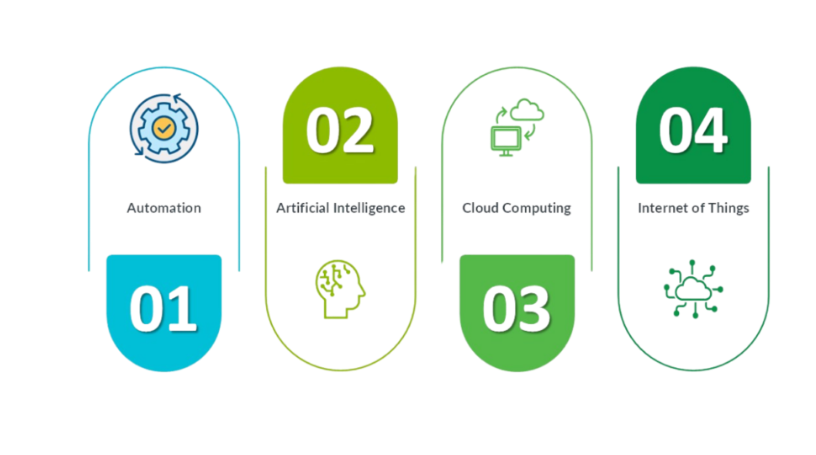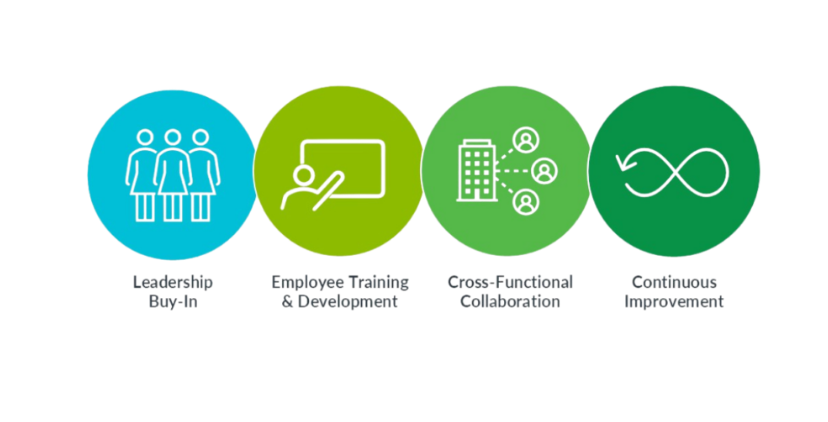Enhance Your Organization’s Productivity with Data and Technology
November 5th, 2024 WRITTEN BY Fresh Gravity Tags: artificial intelligence, Automation, cloud computing, data-driven decision-making, Drive business growth, Enhance Productivity, Internet of Things, Power of Data

Written By Neha Sharma, Sr. Manager, Data Management
In today’s fast-paced and dynamic business landscape, staying ahead of the curve requires more than just traditional methods. Organizations must adapt to the digital age by leveraging the power of data and technology to enhance productivity and drive growth. Whether you’re a small startup or a multinational corporation, integrating data-driven strategies and innovative technologies into your operations can provide numerous benefits and give you a competitive edge in the market.
Harnessing the Power of Data
Data is often referred to as the new oil, and for good reason. It holds immense potential to uncover valuable insights, optimize processes, and make informed decisions. However, the key lies not just in collecting data but in effectively analyzing and interpreting it to drive actionable outcomes.
Implementing robust data analytics tools and techniques allows organizations to:
- Gain Insights: By analyzing large datasets, organizations can uncover patterns, trends, and correlations that provide valuable insights into customer behavior, market trends, and operational inefficiencies.
- Optimize Operations: Data analytics can help identify bottlenecks and inefficiencies in various processes, enabling organizations to streamline operations and allocate resources more effectively.
- Improve Decision-Making: Relying on data-driven decision-making diminishes the need for guesswork. Instead, it empowers leaders to make well-informed choices supported by solid evidence and thorough analysis.
- Enhance Personalization: Understanding customer preferences and behaviors through data analysis enables organizations to tailor products, services, and marketing campaigns to individual needs, driving customer satisfaction and loyalty.
- Predictive Capabilities: With advanced analytics techniques such as predictive modeling and machine learning, organizations can anticipate future trends and outcomes, enabling proactive rather than reactive strategies.
Embracing Innovative Technologies
In addition to leveraging data, embracing innovative technologies is essential for organizations looking to enhance productivity and efficiency. From automation and artificial intelligence to cloud computing and the Internet of Things (IoT), there is a myriad of technologies that can revolutionize how businesses operate.

Figure 1. Technology Drivers that Enhance Productivity
- Automation: Automating repetitive tasks and workflows frees up time and resources, allowing employees to focus on high-value activities that require human intervention. Whether it’s automating data entry processes or scheduling routine maintenance tasks, automation improves efficiency and reduces the risk of errors.
- Artificial Intelligence (AI): AI-powered solutions can analyze vast amounts of data at incredible speeds, uncovering insights and patterns that would be impossible for humans to discern manually. Whether it’s chatbots providing customer support, predictive analytics forecasting future demand, or algorithmic trading optimizing financial transactions, AI is transforming industries across the board.
- Cloud Computing: Cloud-based services offer scalability, flexibility, and cost-effectiveness, allowing organizations to access computing resources and storage capabilities on demand. Whether it’s hosting applications, storing data, or collaborating on projects, the cloud provides a centralized platform for streamlined operations and enhanced collaboration.
- Internet of Things (IoT): IoT devices interconnected via the Internet can collect and exchange data in real time, enabling organizations to monitor and control physical processes remotely. Whether it is tracking inventory levels, monitoring equipment performance, or optimizing energy consumption, IoT technologies offer endless possibilities for efficiency gains and cost savings.
Creating a Data-Driven Culture
To fully harness the potential of data and technology, organizations must foster a culture that embraces innovation, collaboration, and continuous learning.

Figure 2. Building a Data-driven Culture
- Leadership Buy-In: Leadership must champion the importance of data and technology initiatives and allocate resources accordingly. They should lead by example and demonstrate a commitment to embracing digital transformation.
- Employee Training and Development: Providing employees with the necessary skills and training to leverage data analytics tools and technology platforms is crucial. Investing in ongoing education ensures that teams are equipped to adapt to evolving technologies and best practices.
- Cross-Functional Collaboration: Breaking down silos and fostering collaboration between departments encourages knowledge-sharing and interdisciplinary problem-solving. By working together, teams can leverage diverse perspectives and expertise to drive innovation and achieve common goals.
- Continuous Improvement: Embracing a mindset of continuous improvement means constantly seeking ways to optimize processes, enhance efficiency, and innovate. Encouraging feedback and experimentation empowers employees to identify areas for improvement and implement solutions proactively.
In conclusion, in an increasingly digital world, data and technology are essential drivers of organizational productivity and competitiveness. In partnering with Fresh Gravity, organizations can effectively navigate their digital transformation journeys, from strategy to implementation. Fresh Gravity’s comprehensive suite of services and deep expertise in data analytics, AI, cloud computing, and process automation provide the necessary tools and guidance to enhance productivity, streamline operations, and drive growth. To know more about our offerings, write to us at info@freshgravity.com.
.png)







